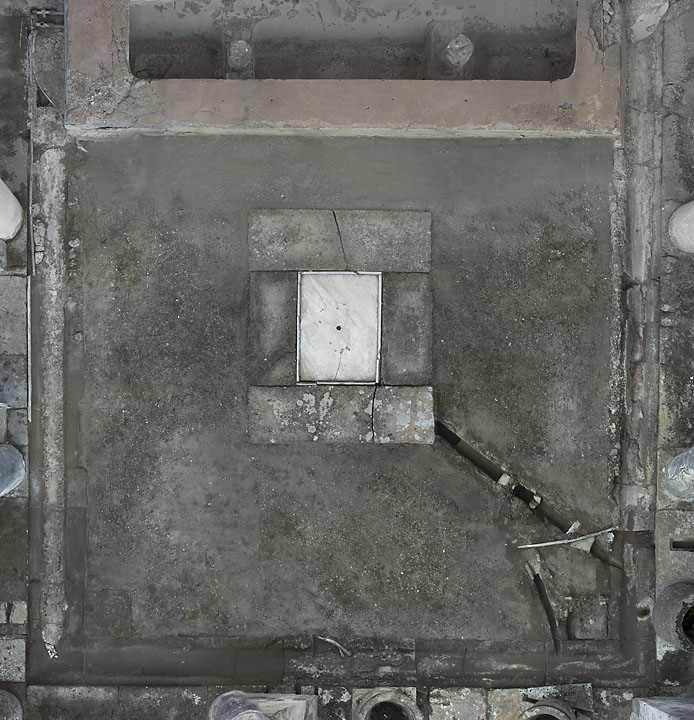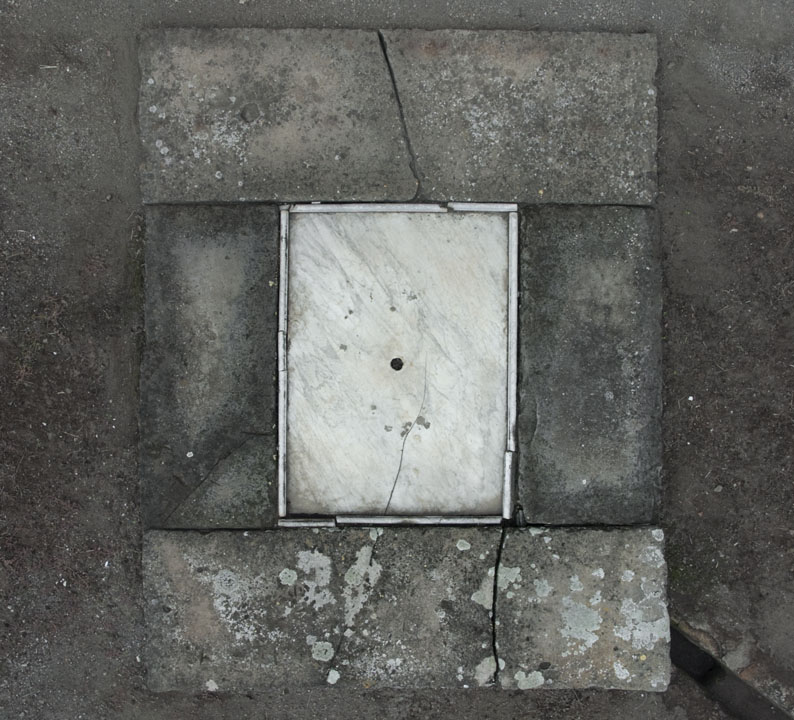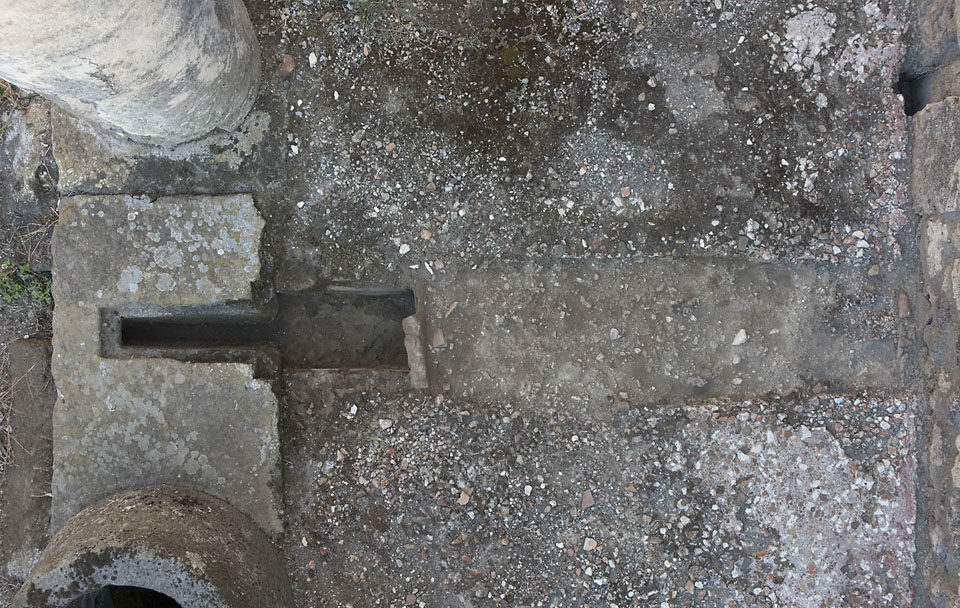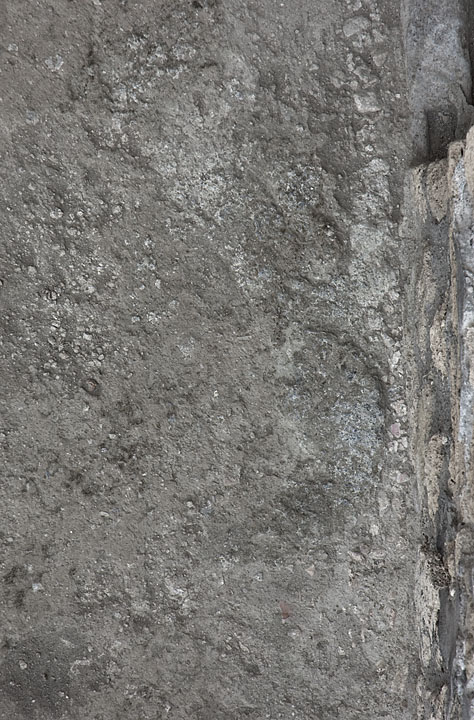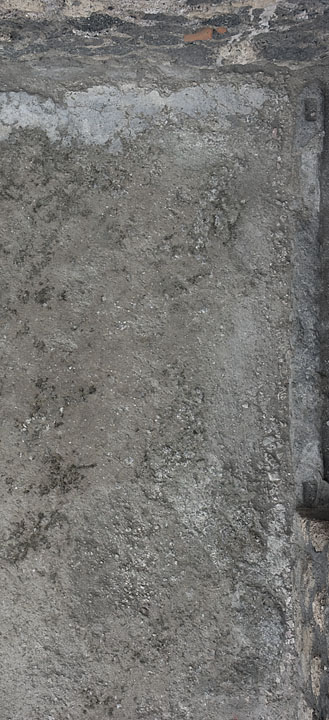Floor
Description
Thomas Staub
The floor in most parts of the porticoes was made of cocciopesto, but is today much damaged. Apparently, pieces of lava, up to 0.04 x 0.04 m large, were pressed into the pavement. In the south portico, the pavement abuts against the wall between tablinum 13 and room 18. It does not abut against the threshold towards room 12, since this is placed on top of the floor. Along the threshold towards andron 10, the pavement is cut away following a diagonal line and refilled with a slightly different cocciopesto, which contains more ceramic split in its lime cement. The pavement reaches under the plaster of the corner columns and under the fundament of the water containers at the fountains, but not under the plaster of the fountain walls and their attached columns. Remains of the red colour covering the pavement are partly preserved under the plaster.
In the west portico, the cocciopesto pavement abuts against the plaster covering the wall between room f and corridor h1, but reaches underneath the plaster at the northernmost section of this wall and on the north wall. It does not seem to reach under the small walls of the fountains or under the plaster of the freestanding columns. It abuts against the stylobate, whereas the relation to the three thresholds on this side of the peristyle is unclear, since the floor is too destroyed at these places. It is also much damaged in prolongation of corridor h1, thus making it difficult to define the covering of that area, where the water supply pipe is placed under the floor, but it seems as if the floor here differs slightly, containing larger shards in the bedding.
In the east portico, only the southern part is covered with the cocciopesto floor, the northern 0.03 - 0.035 m are instead covered by lava-lime cement pavement, which reaches under the plaster of the northern freestanding column and under the protecting structure next to the basin. It abuts against the threshold towards room d. The cocciopesto floor in the southern part of this portico reaches under the plaster of the wall (visible under the lararium), but not under the plaster covering of the column. A stripe in the floor clearly follows the course of the wastewater channel. There the lime-cement contains lava-split as well, which does not occur elsewhere in the peristyle.

